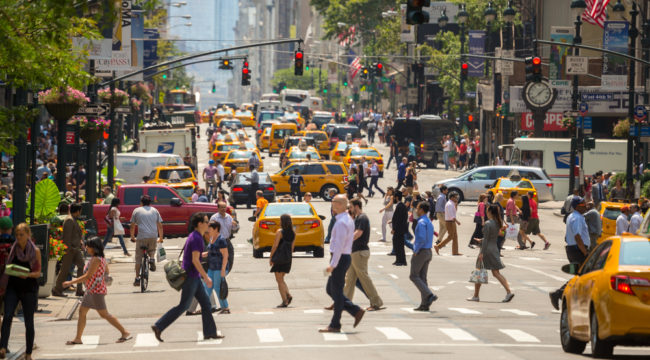Uh-oh: Unemployment Falls Below 4%
Bad news frightens us — but good news terrifies us.
The May jobs report came out Friday.
It revealed the unemployment rate has sunk to a booming 3.8%.
For only the second occasion since 1969… the unemployment rate has slipped below 4%.
(Well are we aware that official unemployment numbers do not necessarily reflect the actual unemployment rate. For simplicity’s sake, we defer to official numbers today.)
CNN reports the latest numbers are “another sign of the strong economy and tight labor market.”
“New milestones in jobs report signal a bustling economy,” assures The New York Times.
Meantime, Goldman Sachs believes the unemployment rate could plumb 3.5% by next year.
Markets reacted in grand style today — the Dow Jones was up over 200 points this morning.
But today we graze against the grain of consensus… knock conventional wisdom from its horse… and illustrate perils lying in wait…
The last time unemployment dropped below 4% was April 2000 — the peak of the dot-com derangement.
The economy was in recession by March 2001… less than one year later.
But that is one isolated instance, comes your reply.
You say we pick a cherry to confirm our thesis.
You demand more evidence.
And more evidence you will have…
Prior to April 2000, unemployment last slipped below 4% in December 1969.
What followed?
The economy dropped into recession that same month… where it remained until November 1970.
The recession of 1969–70 ended what was then the longest economic expansion in U.S. history.
At 108 months and counting, we now wallow in the second-longest economic expansion in U.S. history.
Does today’s 3.8% unemployment rate mean the show is drawing to an end?
We still have only cited two examples of circumstantial evidence, you counter — the jury is not convinced.
But let us call a certain Nicole Smith to the witness stand…
Ms. Smith is chief economist at Georgetown University’s Center on Education and the Workforce.
Her testimony reveals:
If we look historically at other times when the unemployment rate has fallen below 4%, it’s times where it was the boom phase just before recession or just after a major war period…
What we find is that the low unemployment rate is often associated with a boom phase just before a recession. It’s almost a precursor for a recession or a precursor for another slumping economy.
Into the court record goes Exhibit A…
That is a chart giving the history since 1950.
On each occasion the unemployment rate fell below 4%, it reveals, recession soon followed.
The evidence, smoke billowing from the gun barrel:

Now, it is true… we have been treated to recessions when unemployment has remained above 4%.
But the chart proves nonetheless:
On each occasion that the unemployment rate sank beneath 4%… recession was soon on tap.
To remind, it now rests at 3.8%.
But why should recession rapidly follow peak employment?
Extremely low unemployment is often associated with an “overheating” economy.
This overly excited economic engine, our monetary authorities have historically concluded, requires a good cooling off.
They must therefore increase interest rates to bring the business under control.
But they often end up throwing the engine into reverse.
As the following chart informs us, each recession since 1950 was preceded by rising interest rates

Note the rising rates surrounding those periods of 4% unemployment or less:
The early 1950s… the late 1950s… 1969… and 2000.
And note the gray bars of recession forming shortly thereafter.
The Federal Reserve has been increasing interest rates since December 2015.
It will likely increase rates once again in shortly over one week — the market odds presently stand at 91%.
But as Jim Rickards has hollered repeatedly, the Fed is “tightening into weakness.”
GDP has only grown at an average 2.16% annual rate for the past eight years.
At the going rate, 2018 growth will remain below 3%.
Is this the indicator of an overheating economy?
And Jim says the low unemployment rate is a statistical phantom, an illusion:
Official unemployment statistics are highly misleading. They do not count approximately 10 million able-bodied working-age adults who have simply given up on work.
Adjusted for those “missing workers,” the real unemployment rate is about 10%, a depression-level figure.
Jim believes the Fed will have to drop its rate hikes once it realizes the economic patient can’t take the bitter medicine.
But will it be in time to ward off recession?
History says no.
And given today’s ironically disconcerting unemployment number… is recession far behind?
“It is always dawnest before the dark,” says our co-founder Bill Bonner.
We offer no specific forecast.
But given the massive distortions of the current expansion…
We suspect it could be a long night that follows…
Regards,
Brian Maher
Managing editor, The Daily Reckoning



Comments: